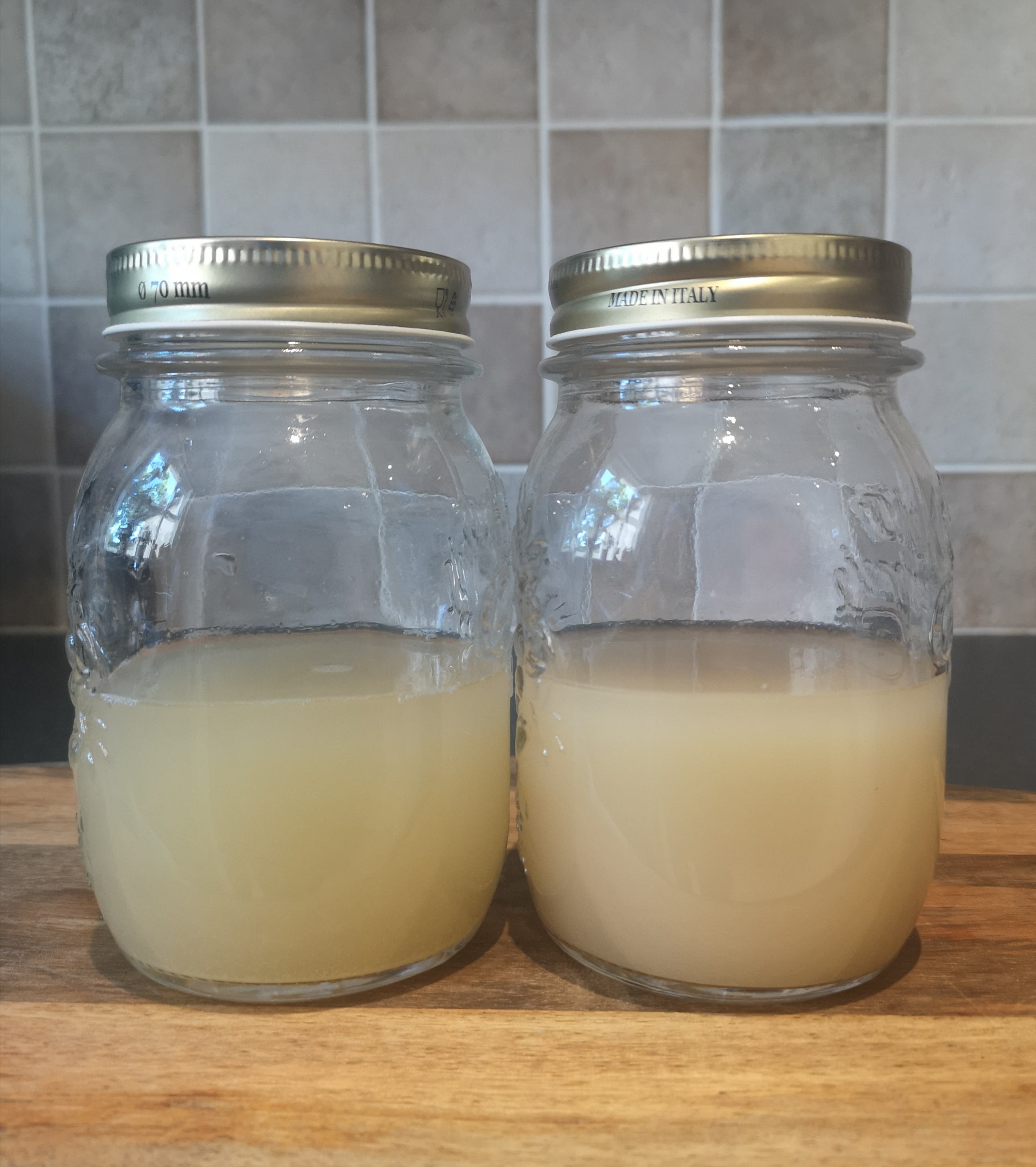A further update on my wild yeast experiment. The second starters fermented out and dropped mostly clear on both of them, and there are no signs of mould at all, so I poured off most of the starter medium and added the sediment to fresh jars with a 5% alcohol solution (water and vodka) in order to get rid of any alcohol intolerant strains. I also sampled the beers, but stupidly forgot to take pH readings:
Hy1
SG 1.005
Aroma
Still incredibly fruity, tinned orange and peach, just a hint of clove.
Flavour
A little acidity up front, but otherwise surprisingly clean and a little boring, but leaves a very bitter finish.
Lv1
SG 1.006
Aroma
Pepper and clove phenols with a nice soft fruitiness, very weizen-like.
Flavour
Again lots of phenols, with a very dry, bitter finish. Not unpleasant, but the phenols are just verging on medicinal. Tastes like beer.
I'm happy to see the attenuation is much higher this time so I'll leave them a day or two then add them to another fresh starter wort. I'm not going to add hops this time just to see if that's the cause of the bitterness, even though I only added a couple of pellets. After that then maybe a 1L test brew with them.











































